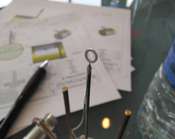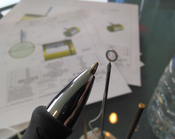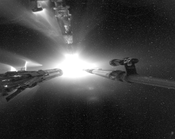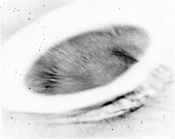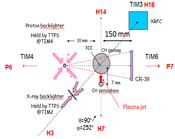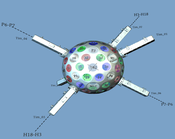[1.27.16] Gas-Bag / Plasma Jet Experiment [Work Related]
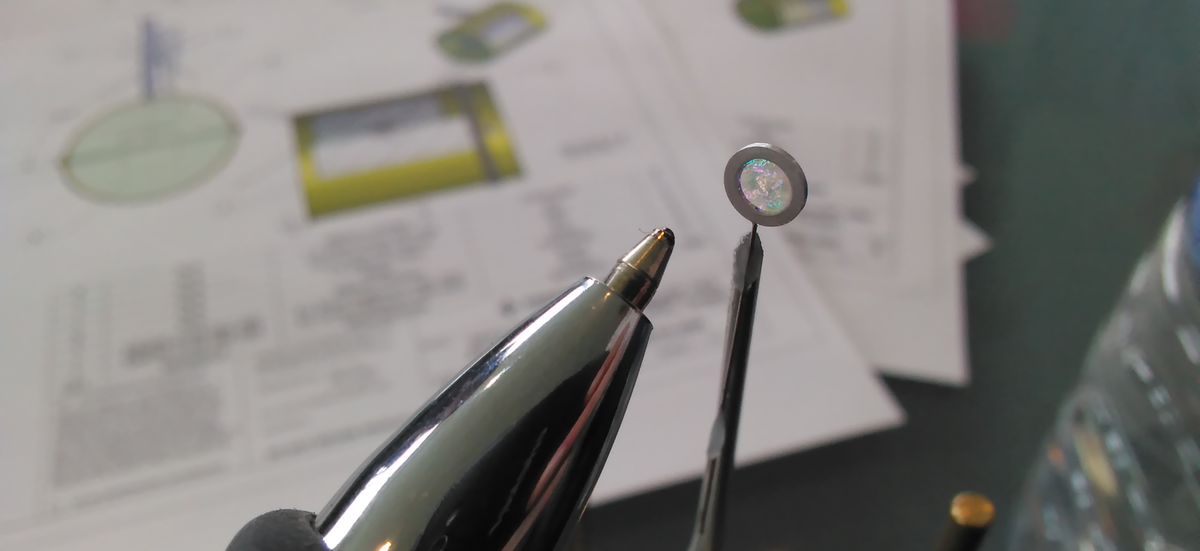
Description of Project
This is work I did to support the research efforts of the pProbeJet Omega campaign @ LLE. The purpose of the proposed research was to measure the effects of the ambient gas on a plasma jet propagation. This was done using two separate diagnostics to produce images of the plasma jets at different time periods, different gasses, and different pressures.
Processes Applied:


Summary:
[Note: Since this is unpublished research, I am limited in what research results and information from this experiment I can share, in the future I will link the research paper that comes out of this experiment.]
My threemain responsibilities for this project were (1) Work with the Senior Scientist (C. Li) to develop the experimental setup from his stated physics goals, (2) Collaborate with GA and Luxel to have our various targets designed and fabricated, (3) Field and Support the diagnostics we were running on the shot day, (4) Analyze the data.
Develop the Experimental Setup; All experiment run at LLNL or LLE (U of R) facilities are designed through a program called VisRad. This is a laser chamber simulation program which allows scientists and engineers the ability to electronically design a detailed experimental setup [Facilities Including LLE-Omega, LLE-Omega-EP, and NIF]. The importance of this cannot be overstated, this program is how beam configuration and alignment is designed, as well as target positioning. There is a delicate balancing act with any experiment at a large facility, and that is between targets ideal position , the rigid pointing and alignment of the available beams. To break it down, it is important to have no beam clipping or beam overshoot. This means that you need to design your experiment so that no beams will either only partially hit or have the potential to completely miss the target. This is important because the lasers are quite powerful, and if they scatter or reflect down another beam port/line (usually the opposing beamport) you will end up damaging various critical components which will require the facility to go down for maintenance. Ultimately in this stage of experimental development you are balancing your design with what is physically achievable with the laser facility you are working with.
Collaboration for Design and Fabrication of Targets: Once your experimental setup starts to take place, you need to determine what targets are feasible. As in, what can actually be made, and what design limitations there are in current manufacturing techniques. This is where I act as a collaboration mediator between the scientific objectives (Physics objectives/PI research objectives) and the engineering requirements (Fabrication). My position in this is important because my skill set allows me to bridge the gap between the physics requirements and the fabrication limitations and restrictions, which can allow me to see design considerations that can ultimately help complete a project. For example, in this experiment I designed and finalized the plasma semi-sphere target, although GA did the fabrication.
Diagnostic Fielding: On the day of the shots, most details have been ironed out and there are a few things that the PI can change throughout the day. But this is all dependent on the pre-shot work done before the shot day.[Shot Day: A day comprising of multiple experimental laser shots]. My main focus is to help field the diagnostic packages as well as trouble shoot any issues that are related to targets and diagnostics. For this experiment I was in-charge of fielding the proton radiography diagnostic package, which is comprised of CR-39 (a Proton sensitive plastic) and filtering materials. This diagnostic is designed to let us take what equates to a still image of charged particles interaction with the experiment. The way this works is by having a backlighter capsule on one side of the experiment/region of interest, and your proton diagnostic package on the other side. We then will uniformly illuminate the capsule with many beams from the system at their highest energy. This ultimately creates a burst of protons that head in every direction. These protons will interact with the region of interest, then impact our diagnostic which creates micron sized tracks/holes through the plastic. After a shot day we can etch and scan for these tracks, and digitally log the location, eccentricity, and diameter of these tracks. Using advanced analytic software we can create high quality images of single instances of the experiment/region of interest. (Two images from the shot day are in the project photos, in these images you can see the shock fronts propagation in the bottom right corner where i has just passed through the entire gas bag.)
Post Shot-Day Diagnostic Data Etch/Scan/Analytics:This part of the project is just like every other stage, a group oriented task. Our research group has a dedicated lab for etching all the CR-39 from various experiments as well as scanning them. My job is to determine the Etch times with the help of various scientists in the group. Initially in this process we will use yield measurements from the shot day to roughly estimate how much etch time we will use, and etch a single piece. This allows us to slowly etch our first piece from the batch to home in on the required etch time to retrieve the best quality data from the CR-39. Once we have acquired the best etch time we usually will request all pieces from the diagnostic to be etch and scanned in an identical fashion. Once the pieces are scanned, we can use our custom software to analyze the CR-39 to produce the image or get other diagnostic data from it.
These projects at the various large laser facilities can be both very challenging and rewarding, but also very draining because of the layers of checks and design requirements that go into every single experiment. This is mainly due to the fact a single day of shots at OMEGA can cost roughly $100K, which is a big responsibility. In the end this experiment has produced some high quality data and will likely be the focus of a paper in the near future.
